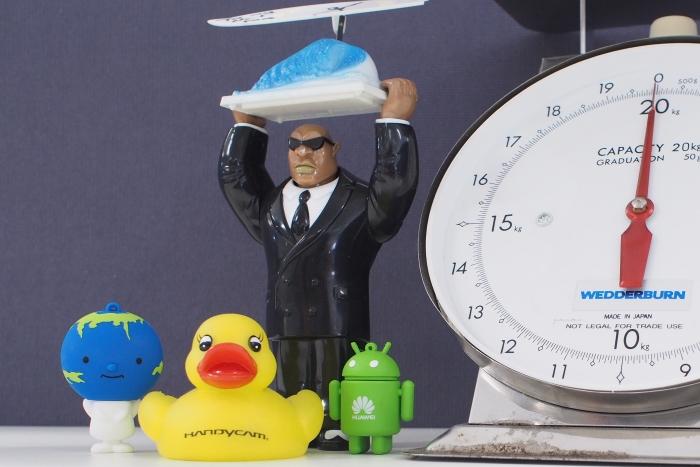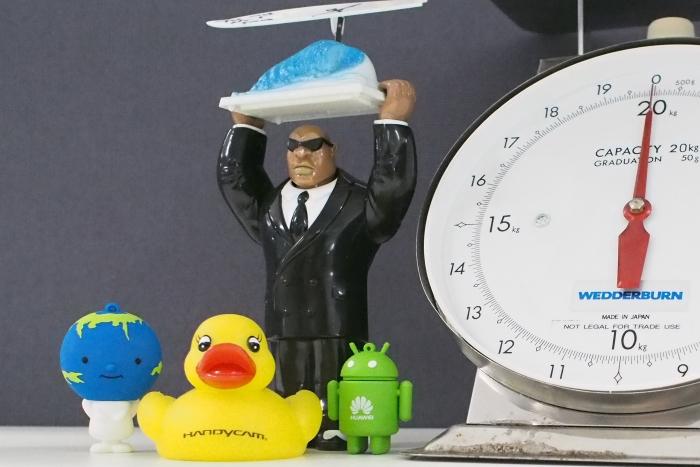
Olympus PEN E-P5 camera
If you want a camera that can make photography fun, this is it
Pros
- Great image quality
- Good ease of use
- Fast performance
Cons
- The menu system is a little too helpful and its tips end up obscuring other menu items
- Frame rate for Art filters still isn't smooth
Bottom Line
The retro styling of the Olympus PEN E-P5 cloaks what is essentially a technical powerhouse when it comes to cameras. We love the image quality and ease of use of this camera, and its Wi-Fi feature is so far the best we've used for transferring photos to a smartphone. It's a top camera to consider if you want to have fun with photography.
-
Price
$ 1,499.95 (AUD)
Olympus has a solid reputation when it comes to interchangeable lens cameras (or compact system cameras as they are now known), and there’s no fear of that waning with the PEN E-P5. It’s a camera that ticks all the boxes when it comes to photo quality, speed, ease of use, build quality, and also style.
A camera for all occasions
The PEN E-P5 uses a Micro Four Thirds mount, and it has a 16-megapixel sensor. It’s designed to be a fast camera when it comes to processing and also taking photos (its 1/8000 of a second shutter speed is evidence of that), and it also comes with some value-added features that make it more than just a standard camera. For example, you also get Wi-Fi with this model, and it actually works quite well. The usual array of Art filters is present so that you can have some fun, and there are some new features, such as 'peaking' for manual focus operations, which allows you to easily see the parts of a scene that are in focus.
Because it’s an interchangeable lens camera, it has great versatility and can be used for pretty much any type of photography, as long as you have the right focal length. Furthermore, because the camera has image stabilisation built right into the body, it means any lens you use can benefit from stability processing — you don’t have to use lenses that have their own stability control.
As for its size, it’s a relatively compact camera considering it can take different lenses. Our kit came with an electronic viewfinder (EVF) and a 17mm lens. The EVF makes the camera a little bulkier, but it’s removable, so you don’t have to always have it attached. There are other kits available, too, which come with the camera body and a 14-42mm lens (and in black or silver), and you also have the option of just buying the body and lenses separately. At the time of writing, Olympus had up to 13 lenses in its own stable, and there were about 58 available when taking other brands into account.
We tested the PEN E-P5 with the M.ZUIKO DIGITAL 17mm lens, which has a maximum aperture of f/1.8. Coupled with this lens, which sticks out of the camera by about 36mm, the PEN E-P5 feels compact and is quite easy to carry around, especially while travelling. The 17mm focal length is good for all manner of photographic tasks ranging from scenery to portraits, and due to it having such a wide aperture of f/1.8, you can create some impressive background blurring on close-up shots. Because it’s a fixed 17mm length, though, it means that you have to use ‘foot zoom’ if your shot doesn’t exactly fit into the frame.

We have no complaints about the image quality that the PEN E-P5 captured during our tests. We found it to be exceptionally clear and vibrant, and photos could be cropped a fair amount without showing a noticeable drop in quality. You can easily use the results from this camera to create prints and photo books, even if you’ve had to crop some photos relatively heavily, and even if you’ve used a relatively high ISO speed (lines start looking feathered at around ISO 1600). The best part about this camera is that it allows pretty much anyone to take great photos with a minimum of fuss.
What you see is what you get
Indeed, if there’s one feature that we talk about every time we review an Olympus camera, it’s the what-you-see-is-what-you-get (WYSIWYG) interface. Any changes made to the exposure can be seen immediately on the crisp 3in LCD screen (Olympus has gone back to LCD from OLED) or through the EVF, which has a 100 per cent field of view and is one of the best we’ve used to date. When you press the shutter button, the image that you see through those avenues is what will be saved to the memory card. It’s the same in auto mode and in any of the camera’s semi-auto and art filter modes — you can see immediately on the screen if a shot is in good light and exactly how it will look when you take the photo.
It’s this WYSIWYG feature that we think makes the PEN E-P5 (and indeed all other Olympus Micro Four Thirds cameras) so much fun to use. We think it’s an especially good feature, not only for inexperienced photographers, but also for experienced photographers who don’t want to fuss too much with the settings. Of course, you still get an exposure meter on the screen, and there is also a histogram that can be invoked.
Ease of use
The camera performed very well in its iAUTO mode, and we actually used it for a lot of our shots while testing this camera, but the ability is definitely there to change settings manually. To this end, Olympus has included a very useful array of physical controls. You can change aperture and shutter by rotating the index finger and thumb dials at the top of the camera, and with the flick of the mode switch you can use the same dials to change the ISO speed and the white balance. Olympus calls this its ‘2x2’ feature, and it means you can make very quick changes to the foundations of an exposure without having to move your fingers too far from the main controls. You also have the ability to access the ‘quick menu’ if you want to change more settings, and this can be entered simply by pressing the ‘OK’ button on the back of the camera.
A touch interface is included with this camera, but it can’t be used to change any of the menu settings (except for colour tones, and to change Art filters and Scene modes). It’s restricted to being used for focus operations in the manual modes, and also for tapping on the screen to take a picture instantly. It’s intuitive to use when you want to quickly change the focal point in an image. Alternately, if you want to change the focal point of an image, you can use the focus button on the back of the camera and move the point around using the control dials.
The other feature that the touchscreen allows you to access is the built-in Wi-Fi. This Wi-Fi feature works in conjunction with the Olympus O.I Share app (for iOS and Android). It’s an app with a simple interface that performed surprisingly well in our tests. It can be used to transfer photos from the camera to your phone so that you can then share them on the Internet (we did this a lot while we were travelling), or it can be used to turn your smartphone into a remote viewfinder for the camera.

We found the Wi-Fi connection to be reliable during our testing — it’s a direct Wi-Fi connection, so you have to disconnect your phone from any current Wi-Fi network and connect to the camera — and Olympus has made it easy to enter the credentials of the network into your phone, simply by scanning the QR code that’s shown on the camera’s LCD screen when you first enter Wi-Fi mode. By default, the app doesn’t transfer photos at their native size, but this can be changed in the app’s settings. We found it to be a very useful way of taking photos off the camera quickly in order to prepare them for uploading to Flickr, and this, along with Twitter and Facebook sharing, can be initiated directly from the app itself.
Closing thoughts
Some other things that stand out about this camera are its speed, battery life, and build quality. It just feels like a solid camera, and we love the way the right side has a raised handgrip. The hinge that holds the 3in screen in place and allows it to tilt is also strong, and it’s designed in such a way so as to not add noticeable bulkiness to the camera.
We found the overall speed of the camera to be very good as far as shot-to-shot performance is concerned (we used an old Class 6 SD card for our tests), and we love the fact that the camera can use a shutter speed of up to 1/8000th of a second. This makes it possible to use an open aperture in bright conditions for the purpose of achieving a blurred background, but without overexposing the image.
Battery life was surprisingly good in our tests, too. We shot over 250 frames using the LCD screen as our viewfinder, and we also used the Wi-Fi function extensively to transfer photos to our phone, yet the battery only ran out of puff towards the end of our test period.
Overall, this is a worthy camera if you’re after something that’s small, easy to use, and which can accept different lenses. We also think it’s the type of camera that can inspire creativity and just make photography fun in general.
Sample photos
Here are some sample images taken with the Olympus PEN E-P5. They are unedited except for resizing so that they can fit these pages (and the ISO test images are cropped).












Brand Post

Most Popular Reviews
- 1 Dell U3223QE review: A winning debut for an IPS Black monitor
- 2 HP Spectre x360 16 review: The right 2-in-1 at the wrong time
- 3 Acer K242HYL review: An affordable monitor for any occasion
- 4 GeForce Now review: You bring the games, Nvidia streams the hardware
- 5 Asus ProArt PA279CV monitor review: The go-to for content creators on a budget
Latest News Articles
- Apple offers 6 months free Apple Music, Keynote holiday greeting card templates
- Adobe expands Creative Cloud M1 support, claims over 80% better performance than Intel
- GoPro delivers Quik solution for videos and photos
- Got a GoPro Hero 8? You can use it as a webcam for your Mac
- Canon embolden mirrorless offering with EOS R5 and R6
Resources
Macworld
What's new, plus best mac-related tips
and tricks

Business Centre
The latest business news, reviews, features and whitepapers

Videos
Watch our video news and reviews from around the world

Guides
Comprehensive buying guides, features, and step-by-step articles

PCW Evaluation Team
Pedro Peixoto
Aruba Instant On AP11D

Set up is effortless.
Cate Bacon
Aruba Instant On AP11D

The strength of the Aruba Instant On AP11D is that the design and feature set support the modern, flexible, and mobile way of working.
Dr Prabigya Shiwakoti
Aruba Instant On AP11D

Aruba backs the AP11D up with a two-year warranty and 24/7 phone support.
Tom Pope
Dynabook Portégé X30L-G

Ultimately this laptop has achieved everything I would hope for in a laptop for work, while fitting that into a form factor and weight that is remarkable.
Tom Sellers
MSI P65

This smart laptop was enjoyable to use and great to work on – creating content was super simple.
Lolita Wang
MSI GT76

It really doesn’t get more “gaming laptop” than this.
Featured Content
- Which Lenovo Laptop Should I Buy?
- Every TV in Samsung's 2022 line-up: OLED, Neo QLED and more!
- Top 10 best Android and Apple phones for under $600
- Everything you need to know about Smart TVs
- What's the difference between an Intel Core i3, i5 and i7?
- Laser vs. inkjet printers: which is better?










